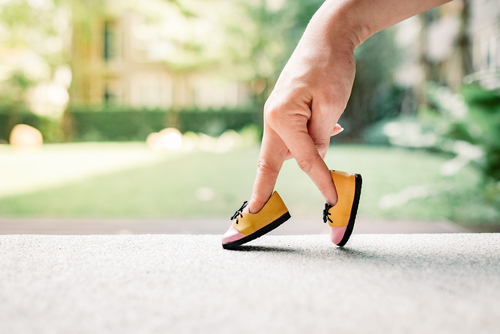Footwear Quality Affects Gait and Balance of CMT Children, Study Shows
Written by |

Researchers have found that footwear that provides inadequate support to users negatively affects the gait and balance of children and adolescents with Charcot-Marie-Tooth (CMT) disease.
CMT is characterized by progressive damage to peripheral nerve cells, particularly affecting the feet and ankles. Children with this disease often experience gait difficulties due to muscle weakness, including problems with balance, and frequent trips and falls. Proper footwear and its impact on gait are of major interest to parents and clinicians of CMT children.
In the study “Gait and footwear in children and adolescents with Charcot-Marie-Tooth disease: A cross-sectional, case-controlled study,” published in the journal Gait & Posture, the research team evaluated different styles of footwear and their relation to specific gait and balance parameters.
Thirty children and adolescents with CMT and 30 healthy volunteers whose ages ranged from 4 to 17 were included in the study. The CMT group included children and adolescents with different genetic defects, including those leading to the disease subtypes CMT1A, CMT2, CMTX 1 and 3, and DI-CMT.
The two groups wore similar shoes including several types of optimal footwear, such as athletic-type runners, high-top leather or canvas boots, leather school shoes, and canvas shoes with laces; and suboptimal footwear, such as flip-flops, slip-on footwear, sandals, and slippers. Seven participants with CMT wore foot orthotics to provide additional support.
As expected, the optimal footwear appeared to have higher median footwear assessment scores than suboptimal footwear for both groups.
Evaluation of the participants’ gait and balance confirmed that the CMT group had significantly worse responses to running, walking, and motor control tests compared to the control group. They walked more slowly with shorter steps and had a wider, more variable base of support.
No significant differences were observed between CMT and healthy participants and the effect of the type of footwear they used. For both groups, the use of optimal footwear was found to improve gait compared to suboptimal footwear and walking barefoot.
The use of optimal footwear was found to significantly improve gait speed, promote longer steps, and decreased cadence. The base of support was found to be wider in both types of footwear compared to barefoot, which may be a compensatory response to the reduced sensory feedback in footwear and subsequent reduced balance, researchers said. Also, the degree of difference was almost double in suboptimal footwear compared to optimal footwear.
“Despite lack of interaction effects between footwear type and disease, it may be possible that children with CMT do not have adequate ankle strength to compensate effectively for loose, unfastened footwear,” they stated.
“Irrespective of their physical impairments, footwear is an important factor when considering children’s functional gait performance and their ability to keep up with their peers,” the researchers added.
Additional studies are needed to further understand the impact of suboptimal footwear on CMT children and the potentially adverse effects it has on gait, such as falls.




